
Raindrops Keep Falling on My Head: A Mosquito’s Lament
This, in case you were wondering, is a mosquito.
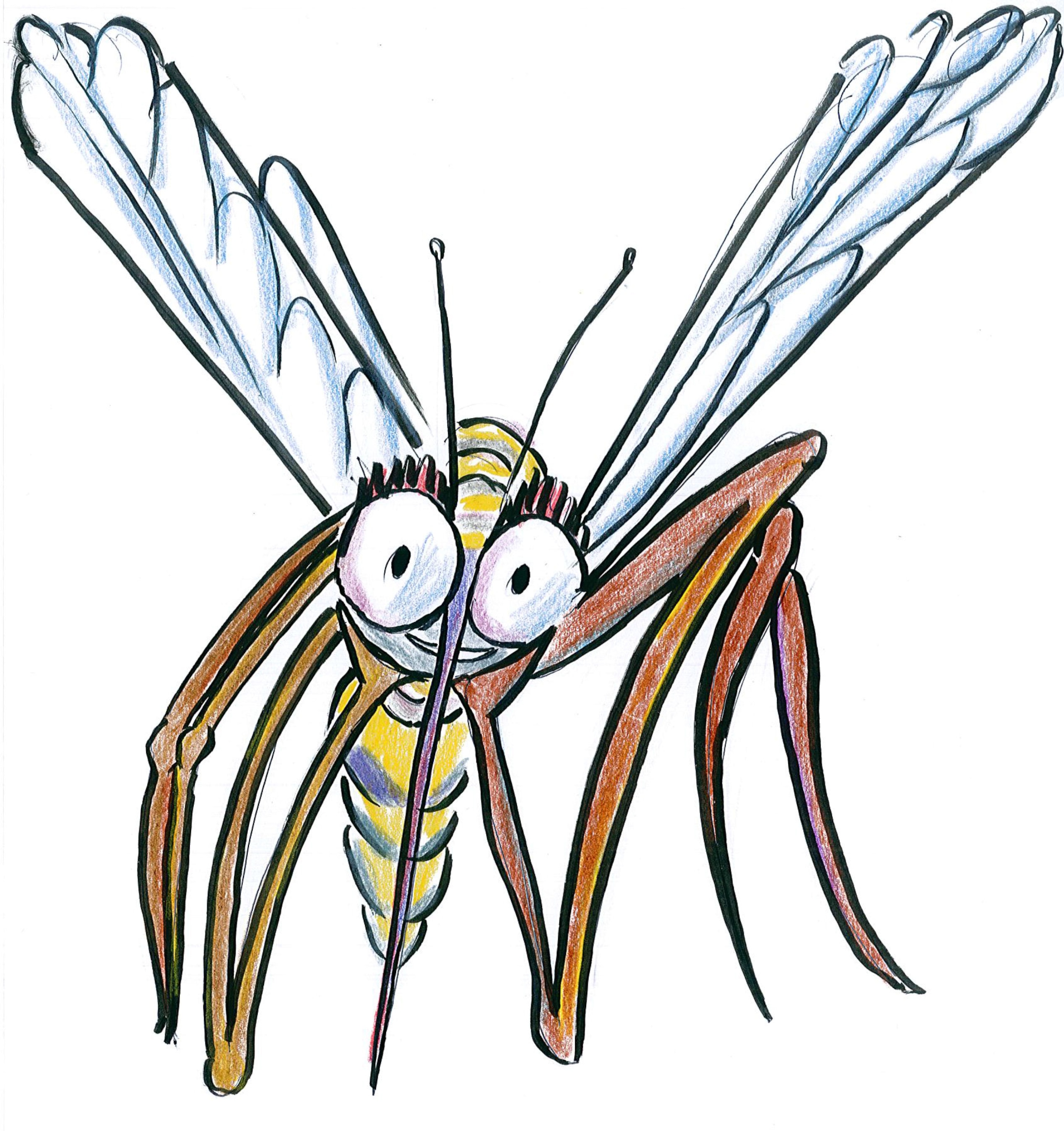
This is a raindrop.

And here’s a puzzle. Raindrops aren’t mosquito friendly. If you’re a mosquito darting about on a rainy day, those drops zinging down at you can be, first of all, as big as you are, and, more dangerously, they’re denser. Water is heavy, so a single raindrop might have 50 times your mass, which means that if one hits you smack where it hurts (between your wings) …
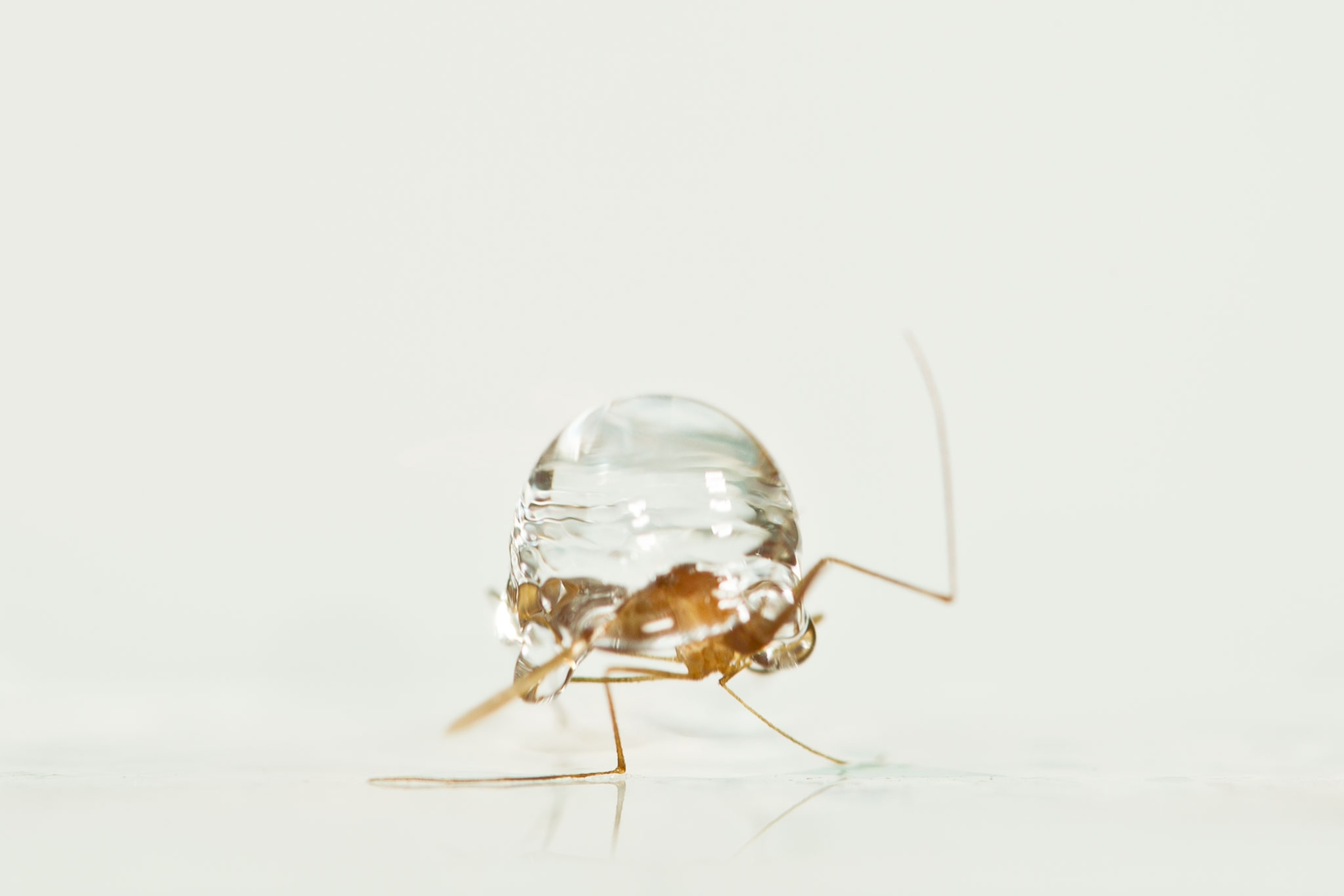
… you should flatten like a pancake. A study says a mosquito being hit by a raindrop is roughly the equivalent of a human being whacked by a school bus, the typical bus being about 50 times the mass of a person. And worse, when it’s raining hard, each mosquito should expect to get smacked, grazed, or shoved by a raindrop every 25 seconds. So rain should be dangerous to a mosquito. And yet (you probably haven’t looked, but trust me), when it’s raining those little pains in the neck are happily darting about in the air, getting banged—and they don’t seem to care. Raindrops, for some reason, don’t bother them.
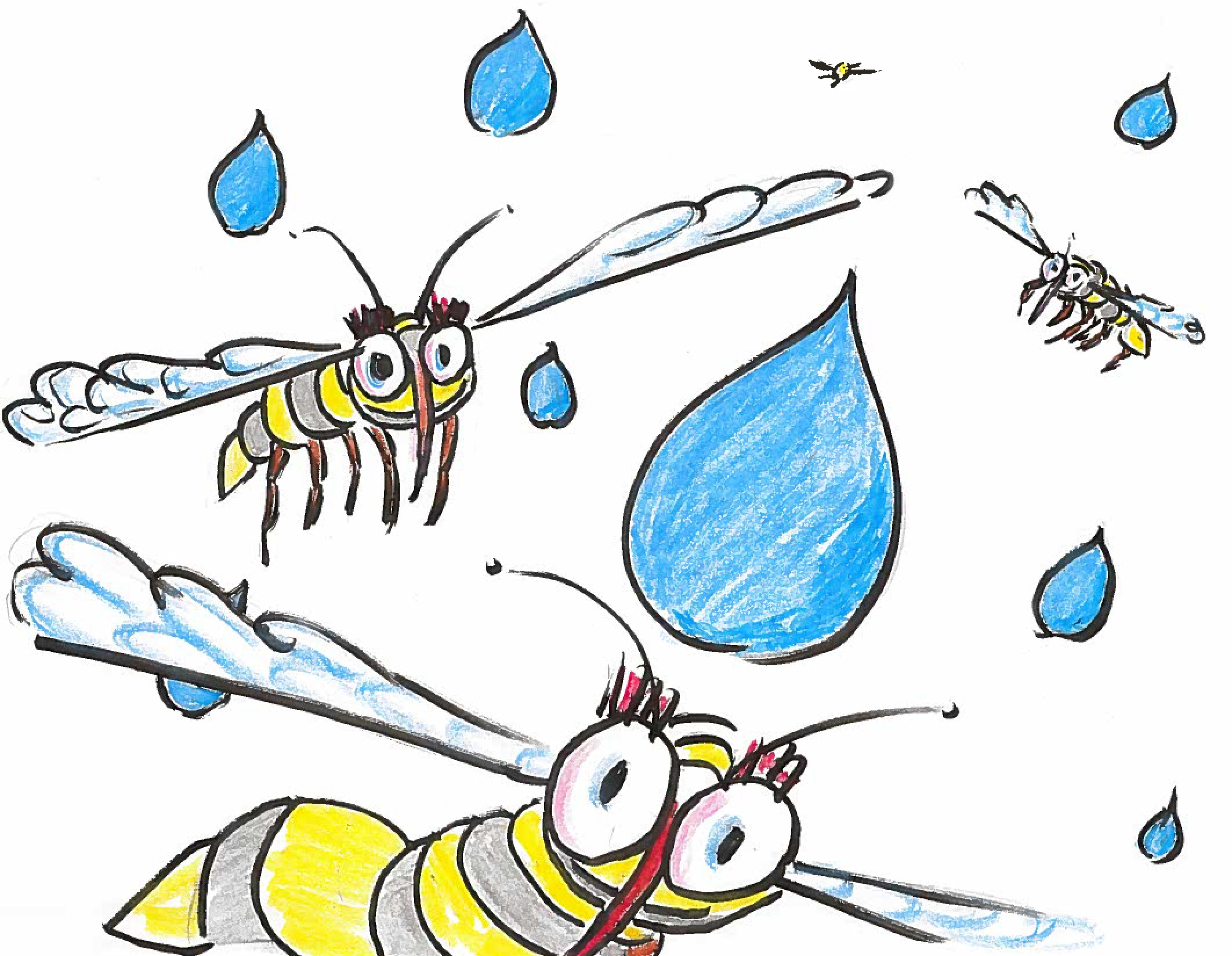
Why not? Why aren’t the mosquitoes getting smooshed?
How Mosquitoes Survive Raindrops
Well, in 2012 David Hu, a professor of mechanical engineering at Georgia Tech, became interested in this problem and decided to pelt some airborne laboratory mosquitoes with water droplets while filming them with a high-speed camera—4,000 to 6,000 frames a second instead of the usual 24. That way he could watch them in super slow motion and figure out what they’re doing when they’re out in the rain. He published his findings in a 2012 paper that I’m going to describe here in “executive summary” form. (His video, by the way, is waiting for you below, so you can see what he saw for yourself.)
What he found is that most of the time anopheles mosquitoes don’t play dodgeball with the raindrops. They do get hit but usually off center, on their long gangly legs, which splay out in six directions. The raindrop can set them rolling and pitching, but they recover quickly—within a hundredth of a second. But even in the worst case, where the mosquito gets slammed right between the wings—a dead-on collision, because the mosquito is so light compared to the heavy raindrop …
… it doesn’t offer much resistance, and the raindrop just barrels along with the mosquito suddenly on board as a passenger. Had the raindrop slammed into a bigger, slightly heavier animal, like a dragonfly, the raindrop would “feel” the collision and lose momentum. The raindrop might even break apart because of the impact, and force would transfer from the raindrop to the insect’s exoskeleton, rattling the animal to death.
But because our mosquito is oh-so-light, the raindrop moves on, unimpeded, and hardly any force is transferred. All that happens is that our mosquito is suddenly scooped up by the raindrop and finds itself hurtling toward the ground at a velocity of roughly nine meters per second, an acceleration which can’t be very comfortable, because it puts enormous pressure on the insect’s body, up to 300 gravities worth, says professor Hu.
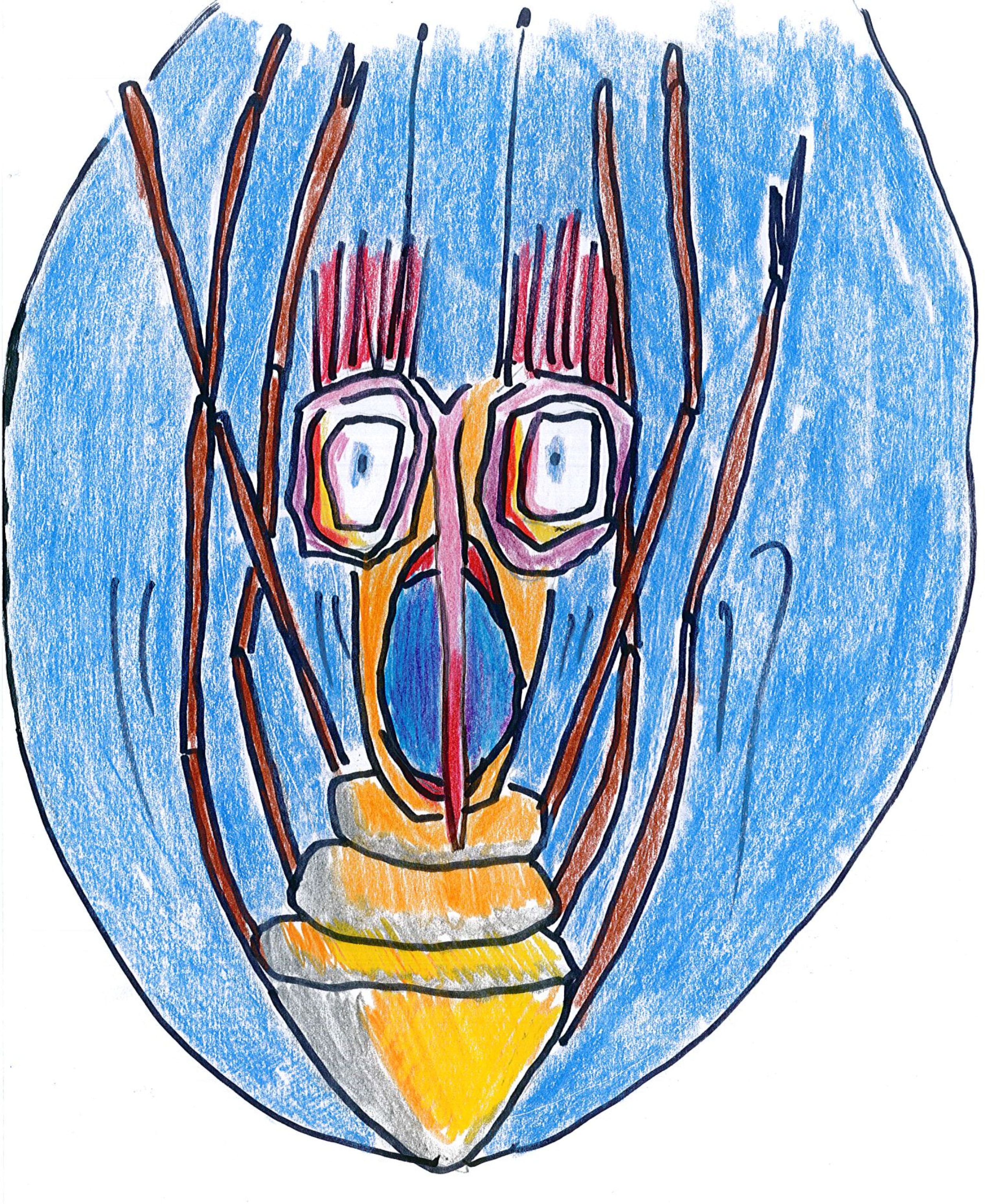
300 Gs is a crazy amount of pressure. Eric Olsen, at his blog at Scientific American, says a jet pilot accelerating out of a loop-de-loop experiences “only about nine gravities (88/m/squared).” One imagines his cheeks all splayed, his face squishy, but hey, that’s a soft-skinned human. We’ve got mosquitoes here. Their heads are harder. They have exoskeletons. Sudden accelerations don’t hurt as much, but what mosquitoes should fear, what they do fear, are crash landings. The ground is a lot harder than a mosquito.
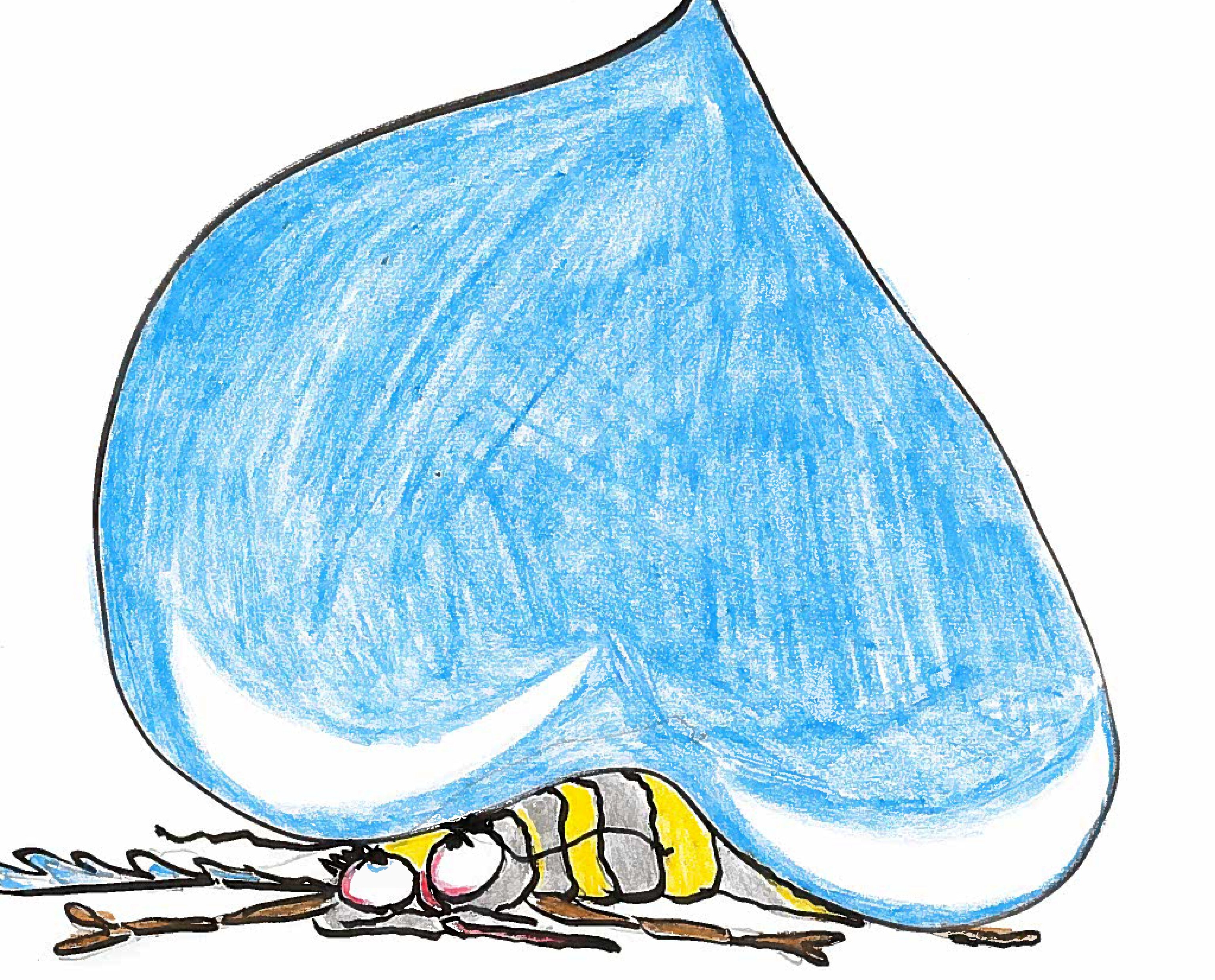
So what a mosquito has to do is get off that raindrop as quickly as possible. And here comes the best part: In most direct hits, Hu and colleagues write, the insect is carried five to 20 body lengths downward, and then, rather gracefully—maybe helped by a dense layer of wax-coated, water-repellent hairs—gets up and “walks” to the side, then steps off into the air, almost like a schoolchild getting off of a bus (albeit a fast-moving bus hurtling toward its doom). It does this almost matter-of-factly, like it’s no big deal. A mosquito, Hu writes, “is always able to laterally separate itself from the drop and recover its flight.” Always. (Unless the raindrop hits them too close to the ground.) If you want to see this for yourself, take a look at Hu’s video.
Video by David Hu and Andrew Dickerson
The moral here, should we need one, is that if you’re a mosquito on a rainy day, the place to be is high off the ground, and if you’re a human who worries about mosquito safety (not a big group, I know), you can move on. They solved this one roughly 90 million years ago.

